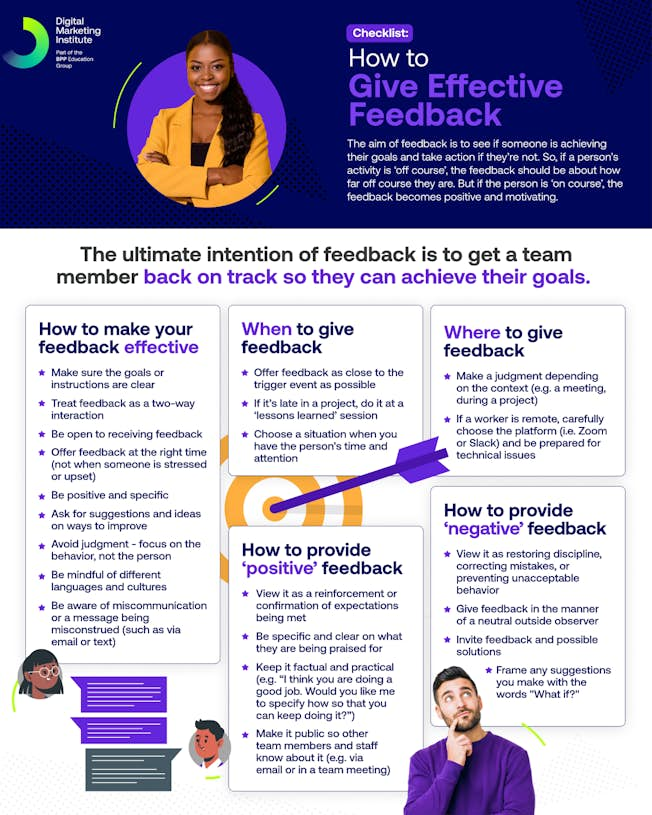
In any working environment, people depend on feedback to guide their behavior. The aim of feedback is to see if someone is achieving their goals, and to take action if they’re not.
So, if a person’s activity is ‘off course’, the feedback should be about how far off course they are. But if the person is ‘on course’, the feedback becomes positive and motivating. However, when given skillfully, ‘negative’ feedback can also be motivating.
The ultimate intention of feedback is to get a team member back on track so they can achieve their goals.
Use the checklist below as a guide to managing feedback.

How to make your feedback effective
- Make sure the goals or instructions are clear
- Treat feedback as a two-way interaction
- Be open to receiving feedback
- Offer feedback at the right time (not when someone is stressed or upset)
- Be positive and specific
- Ask for suggestions and ideas on ways to improve
- Avoid judgment - focus on the behavior, not the person
- Be mindful of different languages and cultures
- Be aware of miscommunication or a message being misconstrued (such as via email or text)
When to give feedback
- Offer feedback as close to the trigger event as possible.
- If it’s late in a project, do it at a ‘lessons learned’ session.
- Choose a situation when you have the person’s time and attention.
Where to give feedback
- Make a judgment depending on the context (e.g. a meeting, during a project).
- If a worker is remote, carefully choose the platform (i.e. Zoom or Slack) and be prepared for technical issues.
How to provide ‘positive’ feedback
- View it as a reinforcement or confirmation of expectations being met.
- Be specific and clear on what they are being praised for.
- Keep it factual and practical (e.g. “I think you are doing a good job. Would you like me to specify how so that you can keep doing it?”).
- Make it public so other team members and staff know about it (e.g. via email or in a team meeting).
How to provide ‘negative’ feedback
- View it as restoring discipline, correcting mistakes, or preventing unacceptable behavior.
- Give feedback in the manner of a neutral outside observer.
- Invite feedback and possible solutions.
- Frame any suggestions you make with the words "What if?".
Related Articles
Upgrade to Power Membership to continue
your access to thousands of articles, toolkits, podcasts, lessons and much much more.
Become a Power Member- Login
- View Courses
- - - -
- Courses
- Resources
- - - -
- My Account
- Change Password
- Logout





